|
Japanese red maple (Acer pycnanthum K. Koch; Japanese common name, Hananoki)
is an endangered, indigenous species that grows only in discrete wetlands in
central Honshu, Japan (Ogata, 1965a; 1965b; Barnes et al., 2004). It is listed
as “vulnerable”: the possibility of extinction is increasing (Ministry of
Environment, 2007). Its natural distribution is restricted to a geographic area
of only 1,090 km2 (Barnes et al., 2004), and serious
habitat deterioration has been reported (A Survey Group on Dynamics of Japanese
Flora, 1989; Japanese Red Maple Conservation Group, 2003).
Research of
Japanese red maple in early time was summarized by Ogata (1965b). According to
Ogata, Japanese red maple was first described by Iinuma (unpublished, in Makino,
1902) and Ito (1873) in the late 19th century. Earlier than Ito’s publication,
the scientific name Acer pycnanthum was given by Koch based on the plant
specimen sent to him from Ito (Koch, 1864). Koch described Japanese red maple
as being very similar to red maple (i.e., A.
rubrum), but he differentiated the two species by leaf, flower bud, and
twig morphology (Koch, 1864). However, in 1902, Makino insisted that A.
pycnanthum should be the same species as A. rubrum because he
suspected that in the past red maple had been introduced into Japan from North
America (Makino, 1902). Thus, Makino renamed the species Acer rubrum Linn.
Ten years after
the Makino’s proposed correction, a natural population of Japanese red maple
was first discovered at Sakamoto town in Ena gun, which is located today in Nakatsugawa
city, Gifu prefecture (Koidzumi, 1912). Because of this discovery, Makino
regarded Japanese red maple as different taxon from A. rubrum, but he
considered it as a variety of A. rubrum, i.e., A. rubrum var. pycnanthum Makino
(Makino, 1912). This synonym had been used at least until 1970s (e.g., Kurata,
1973), but A. pycnanthum is widely used today.
After the discovery of the Sakamoto population, new populations were located one after another in Nagano, Gifu, and Aichi prefectures (Ogata, 1965b). The most northern isolated locality, Iyari, was reported later by Yokouchi (1962). Populations in Shiga prefecture, which are widely known to the public, are considered to be of planted origin (Miyoshi, 1925; Ogata, 1965b).
Ogata (1965a)
published a comprehensive report on the geographic distribution and systematics
of Japanese red maple. He listed the known populations at that time based on
the work by Hama (1921, in Ogata, 1965a) and summarized that they were mainly
concentrated in the southeastern part of Gifu prefecture and the southern part
of Nagano prefecture. He also described the morphological and taxonomical
characteristics of the species (Ogata, 1965a; 1967).
Japanese red
maple has been regarded as a member of special endemic flora around Tokai
region (Ueda, 1989; 1994; 2002). According to Ueda’s reviews (1989; 1994),
Koidzumi (1934) first referred to Japanese red maple as a characteristic plant
species around Mikawa highland region, central Japan. Sugimoto (1958) also
referred to Japanese red maple as an example of species characterizing the
flora around Ise Bay. After that, Inami (1966) introduced the term “circum-Ise
Bay element” for the species whose main distribution is located in Mie, Gifu,
Aichi, and Shizuoka prefectures. Japanese red maple was included in this
species group (Kikuchi et al., 1991). Furthermore, Ueda (1989) defined 13
species of the circum-Ise Bay elements as “Tokai hilly land elements” that rely
on small peatless mires in Tokai region, including Japanese red maple.
Reference
and More Information: Saeki, I. 2006. Application of landscape ecosystem
approach for conservation of the endangered Japanese red maple and the wetland
ecosystems that support it. Ph.D. Thesis. Tokyo University of Agriculture and
Technology.
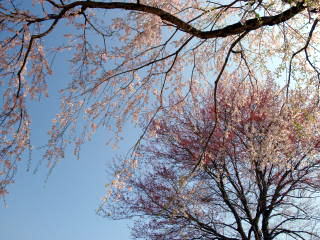 |
Acer pycnanthum
April. Iida, Nagano, Japan |
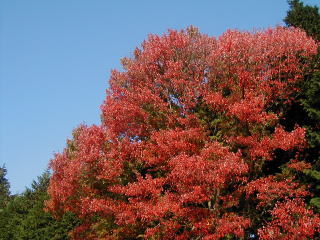 |
Acer pycnanthum
November. Iida, Nagano, Japan |
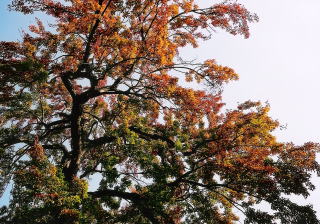 |
Acer pycnanthum
November. Iida, Nagano |
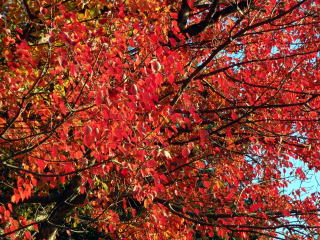 |
Acer pycnanthum
November. Iida, Nagano, Japan |
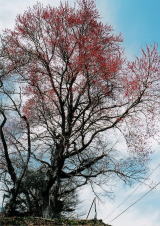 |
Acer pycnanthum
April. Ena, Gifu, Japan |
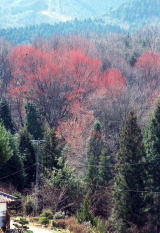 |
Acer pycnanthum
April. Ena, Gifu, Japan |
 |
Acer pycnanthum
November. Achi, Nagano, Japan |
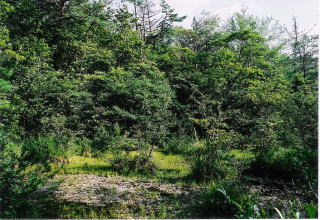 |
Acer pycnanthum and wetland
August. Toki, Gifu, Japan |
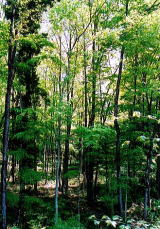 |
Acer pycnanthum forest
May, Nakatsugawa, Gifu, Japan |
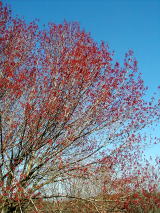 |
Acer pycnanthum
April. Mizunami, Gifu, Japan) |
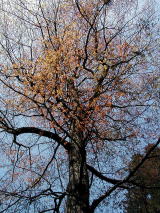 |
Acer pycnanthum
April. Ena, Gifu, Japan |
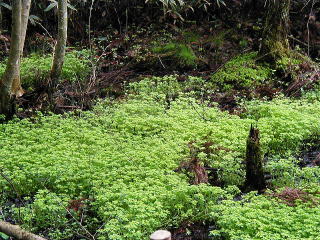 |
Acer pycnanthum forest
May. Nakatsugawa, Gifu, Japan |
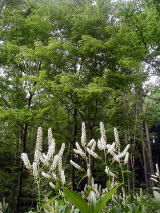 |
Acer pycnanthum & Veratrum stamineum var. micranthum
May. Achi, Nagano, Japan |
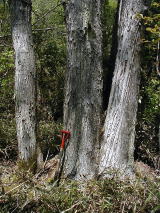 |
Acer pycnanthum
April. Toki, Gifu, Japan |
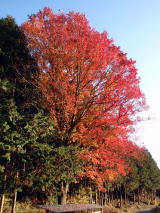 |
Acer pycnanthum
November. Iida, Nagano, Japan) |
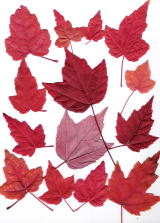 |
Acer pycnanthum |
 Red maple (Acer rubrum) Red maple (Acer rubrum) |
Red maple (Acer rubrum L.) is the most widely distributed and abundant deciduous tree species in eastern
North America (Walters & Yawney, 1990). Its range spans c. 24_ of latitude, 40_ of longitude and from sea level to 1370 m
elevation (Sargent, 1922; Walters & Yawney, 1990). It occurs on virtually
every type of glaciated and non-glaciated landform within its range, from
excessively drained to very poorly drained soils, and on sites of both high and
very low nutrient availability (Barnes & Wagner, 2004). Rarely found in
pure stands, red maple occurs in 56 of the 88 non-tropical forest cover types
of the eastern USA (Eyre, 1980). Numerous studies have demonstrated great genetic
and phenotypic variation among and within populations, as well as clinal variation
in ecological traits such as phenology and growth related to day length, length
of growing season, temperature and preference for wet versus dry sites (Perry
& Wang, 1960; Townsend et al., 1982; Farmer, 1997; Bauerle et al., 2003). In their description of A. rubrum L., Gleason &
Cronquist (1991, p. 353) conclude: ‘Morphologically, cytologically and
ecologically variable, but indivisible’. There are currently three broadly
accepted geographic varieties: A. rubrum var. rubrum Sarg., A. rubrum var. drummondii Sarg. and A. rubrum var. tridens Wood.
Reference
& More information: Saeki, I., C. W. Dick, B. V. Barnes, and N. Murakami.
Comparative phylogeography of red maple (Acer rubrum L.) and silver maple (A.
saccharinum L.): impact of introgression, habitat preference, and glacial
history in sister species. Journal of Biogeography (in press)
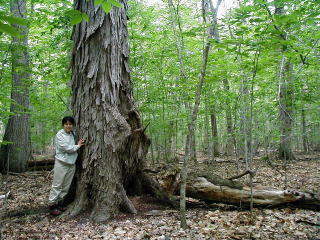 |
Acer rubrum var. rubrum
July. Michigan, USA. |
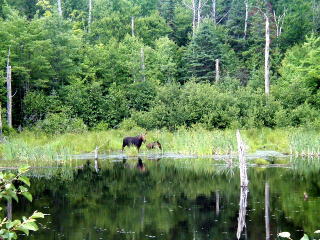 |
Acer rubrum var. rubrum
July. Ontario, Canada |
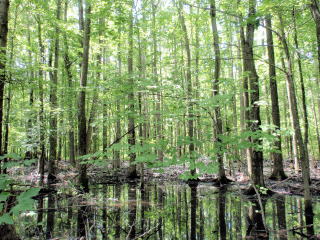 |
Acer rubrum var. drummondii
June. Illinois, USA |
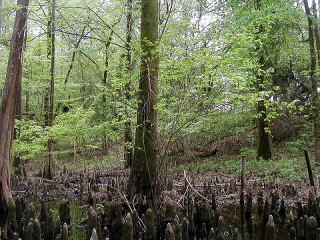 |
Acer rubrum var. tridens
April. Georgia, USA |
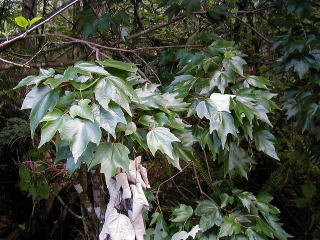 |
Acer rubrum var. tridens
April. Florida, USA.
|
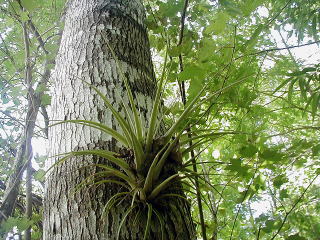 |
Acer rubrum var. tridens
April. Florida, USA. |
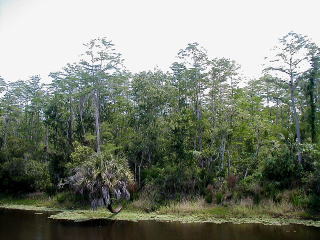 |
Acer rubrum var. tridens
April. Florida, USA. |
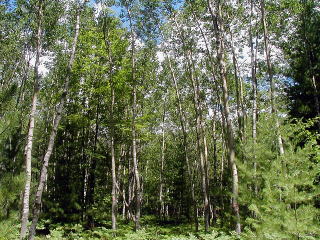 |
Acer rubrum var. rubrum
July. Michigan, USA. |
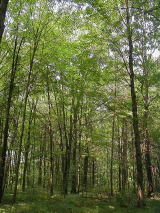 |
Acer rubrum var. rubrum
July. Michigan, USA. |
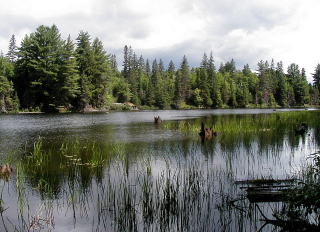 |
Acer rubrum var. rubrum
July. Ontario, Canada. |
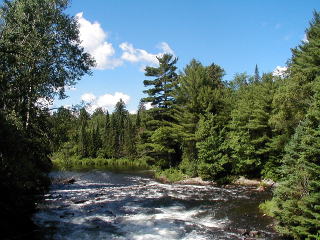 |
Acer rubrum var. rubrum
July. Ontario, Canada. |
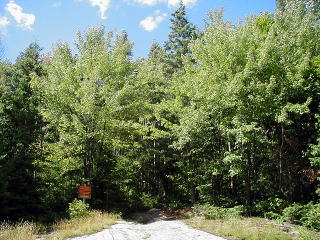 |
Acer rubrum var. rubrum
July. Ontario, Canada. |
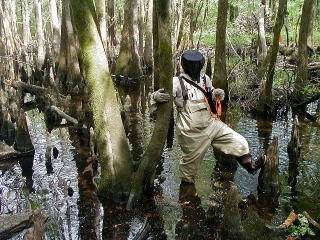 |
Acer rubrum var. tridens
April. Georgia, USA |
 Silver maple (Acer saccharinum) Silver maple (Acer saccharinum) |
Silver maple (Acer saccharinum L.) is also widely distributed in eastern North America but
does not reach the latitudinal extremes of A. rubrum or the extent of its occurrence west of the Mississippi
River. It is markedly site differentiated from A. rubrum, occurring in full sun along the bank and adjacent terrace (first bottom)
of river floodplains that are inundated during the first part of the growing
season, and in microsites of very poorly drained swamps and ice-block depressions.
In the latter ecosystems, the two species may grow side by side. Despite
ecological and cytological barriers to hybridization, natural hybrids have been
reported in herbarium collections (A. freemanii E. Murray) (Ellis, 1963) and controlled crosses have been
made to produce horticultural varieties, such as the Freeman maple (Freeman,
1941; Murray, 1969; Santamour, 1993). Ten intra-specific subspecies, varieties and
forms (excluding horticultural cultivated varieties) have been recognized
(Index Kewensis, Gray Card Index), and are based on minor differences in leaf
morphology. No geographic taxa have been recognized.
Reference
& More information: Saeki, I., C. W. Dick, B. V. Barnes, and N. Murakami.
Comparative phylogeography of red maple (Acer rubrum L.) and silver maple (A.
saccharinum L.): impact of introgression, habitat preference, and glacial
history in sister species. Journal of Biogeography (in press)
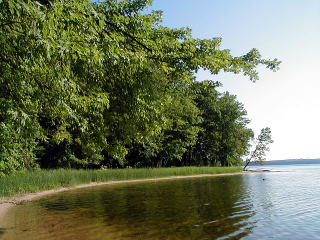 |
Acer saccharinum
July. Michigan, USA. |
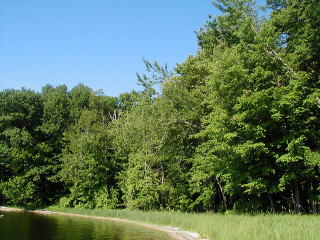 |
Acer saccharinum
July. Michigan, USA. |
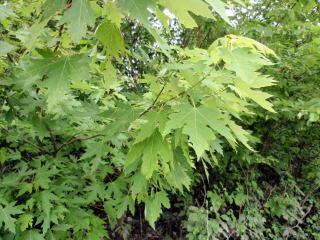 |
Acer saccharinum
June. Illinois, USA. |
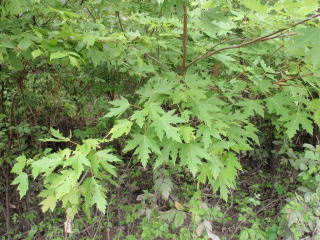 |
Acer saccharinum
June. Illinois, USA. |
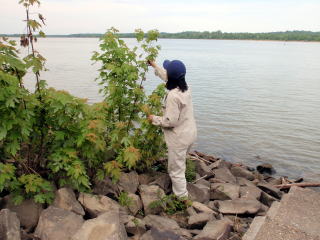 |
Acer saccharinum
June. Illinois, USA. |
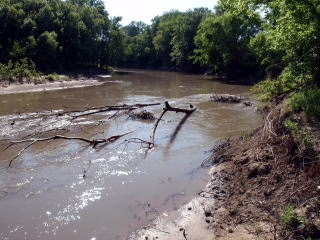 |
Acer saccharinum
June. Illinois, USA. |
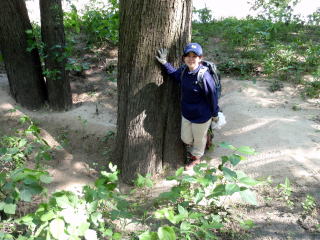 |
Acer saccharinum
June. Illinois, USA. |
 Others Others |
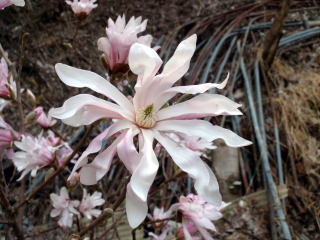 |
Magnolia stellata:
Assoicated species of Acer pycnanthum |
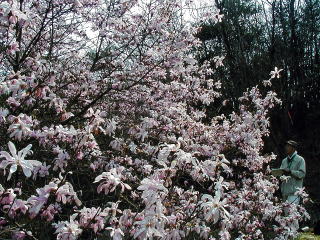 |
Magnolia stellata:
Assoicated species of Acer pycnanthum |
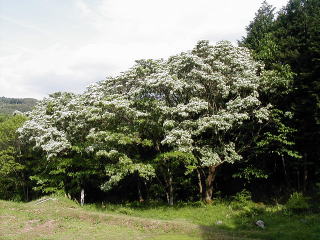 |
Chionanthus retusus
Rare tree whose distribution is similar to Acer pycnanthum |
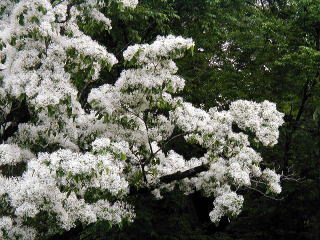 |
Chionanthus retusus
Rare tree whose distribution is similar to Acer pycnanthum |
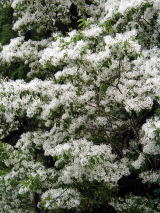 |
Chionanthus retusus
Rare tree whose distribution is similar to Acer pycnanthum |
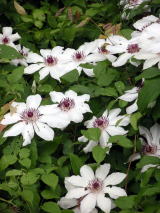 |
Clematis patens
Associated species of Acer pycnanthum |
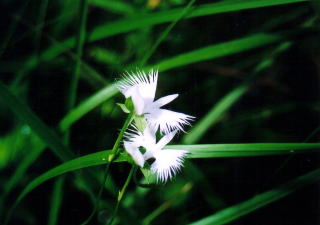 |
Habenaria radiata
Rare species which sometimes grow together with Acer pycnanthum |
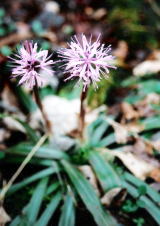 |
Heloniopsis orientalis Associated species of Acer pycnanthum |
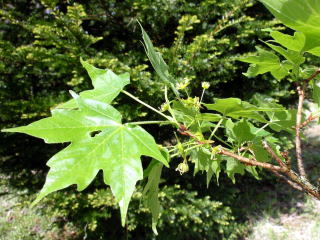 |
Acer miyabi var. shibatae
Endangered maple in Japan |
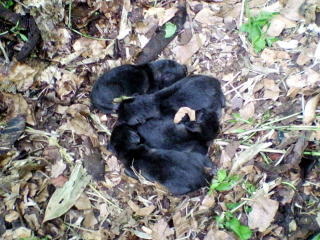 |
Babies of Raccoon dog found in Acer pycnanthum forest. |
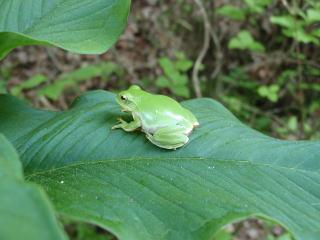 |
Japanese tree frog found in Acer pycnanthum forest. |
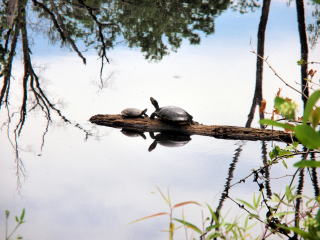 |
Turtles in Acer rubrum site. |
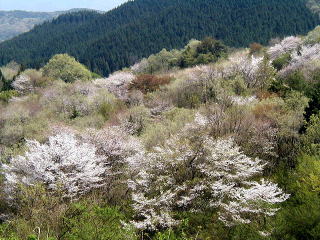 |
Satoyama forest in Spring.
Ena, Gifu, Japan. |
|